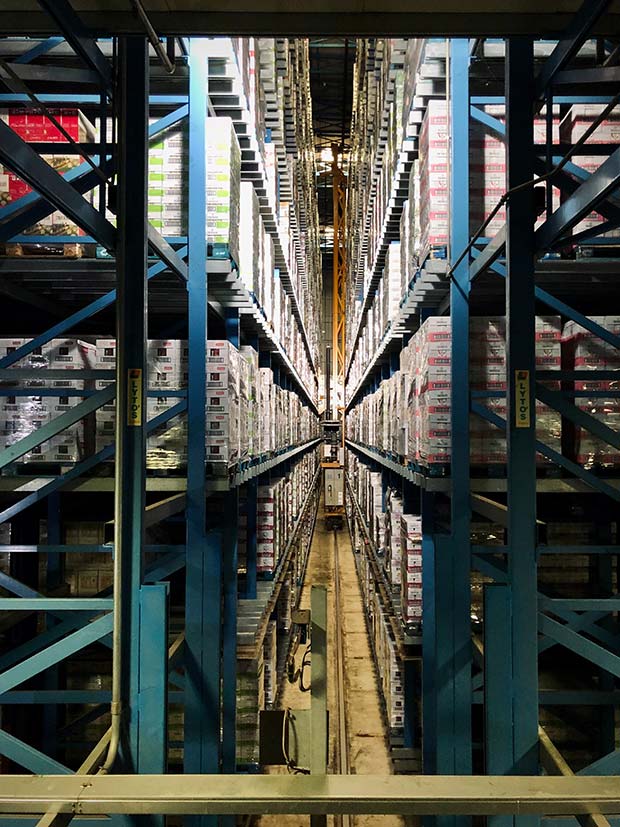Holding excess inventory can be a costly strategy but now, because of the pandemic, Brexit and general economic uncertainty, the practice is becoming more widespread, says Eric Carter, Solutions Architect at Indigo Software. Many businesses are weighing up the benefits of having uninterrupted access to raw materials and inventory against concerns about inventory management costs. ‘Just in case’ inventory management is definitely a growing trend for businesses.
 If your business is holding or intends to hold extra stock in case of future supply chain interruptions or shortfalls, or to mitigate possible price rises over the coming months, it is important to be managing the excess inventory in your warehouse as efficiently as possible. This will help to minimise the extra expense of managing these goods and to eliminate wastage.
If your business is holding or intends to hold extra stock in case of future supply chain interruptions or shortfalls, or to mitigate possible price rises over the coming months, it is important to be managing the excess inventory in your warehouse as efficiently as possible. This will help to minimise the extra expense of managing these goods and to eliminate wastage.
Using a best of breed WMS (warehouse management system) can help you to improve stock management significantly when warehouse space is tight in multiple ways:
Putaway management and location assignments
Invaluable for warehouses with excess inventory, an effective put-away process is an important stock management strategy to maximise space utilisation and ensure the physical movement of products can be kept to a minimum. There are multiple ways a WMS can automate putaway, by identifying the best place to store items based on available spaces, monitoring how frequently the items will be picked and where they should be placed in the warehouse and whether items need special storage considerations. The different putaway options available within a WMS can be flexible and suggested on an ad-hoc basis, or structured around a set of rules. For instance, they could be set to raise an alert if the incoming stocks need special handling instructions, e.g. allergens must be stored well away from any contaminants in a food warehouse.
Pick route optimisation and planning
As travelling can take up a large part of the time spent on warehouse picking processes, appropriate sequencing of picking tasks within an order is crucial to achieving high efficiency, especially when the warehouse is holding excess stock. After evaluating the day’s order pool and assigning tasks, a WMS automatically evaluates the routes available and will direct operatives to fulfil pick instructions using the most efficient travel path for their immediate location. Goods are picked more quickly, potentially using fewer resources.
Shelf life management and stock rotation
There is huge value in using a WMS to optimise stock rotation and ensure that items with a limited shelf life are carefully managed to avoid any wastage. This extends beyond the obvious perishable raw materials to also include packaging items, which can in turn also impair finished product quality if they are past their recommended use by date. A WMS makes this easy by automatically reminding operatives of which lots to pick first, based on first in first out (FIFO) principles.
Perpetual inventory (PI) stock counting
If your warehouse is holding excess inventory, how are you managing stock counts? By introducing a daily PI or cyclical counting process supported by a WMS, warehouse managers can eliminate the need to undertake stock counts on a monthly or yearly basis. Cyclical counting is the most effective way to maintain inventory. It also means it’s business as usual whilst counting is in progress and shrinkage can be minimised. All materials movements are accurately recorded with an electronic audit trail and discrepancies are immediately apparent.
Traceability management
When product quality issues are raised, it is vital that all affected products can be quickly and accurately identified to minimise potential losses – both financially and to brand reputation. Using a WMS, it’s possible to create reports detailing lot / batch / expiry date information which confirms to compliance requirements and also allows for detailed trend analysis. At any point in time, a WMS will provide a full trail of what has happened to every element of stock during its entire lifecycle, providing extensive traceability management options. The audit trail covers the entire supply chain, right down to the source and provenance of the original raw ingredients at the SKU, UPC and lot level, limiting the impact of inventory wastage.
Author: Eric Carter, Solutions Architect Indigo Software. www.indigo.co.uk




Comments are closed.